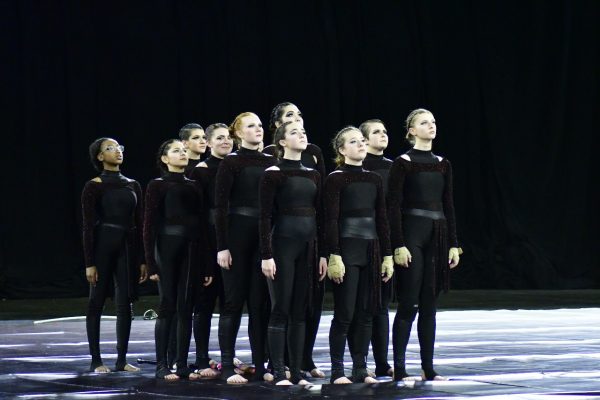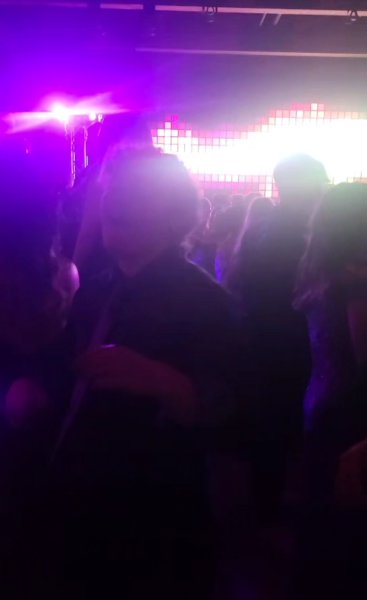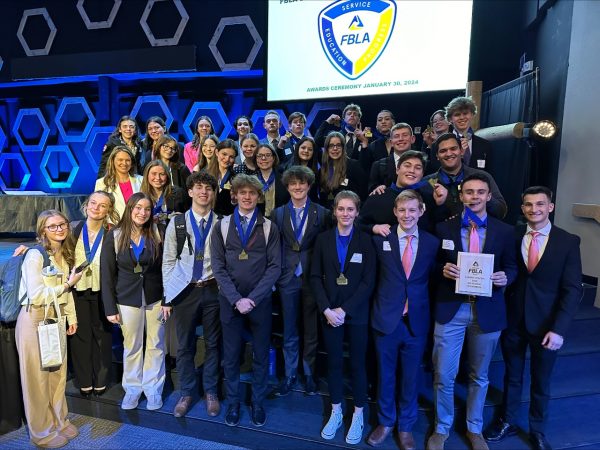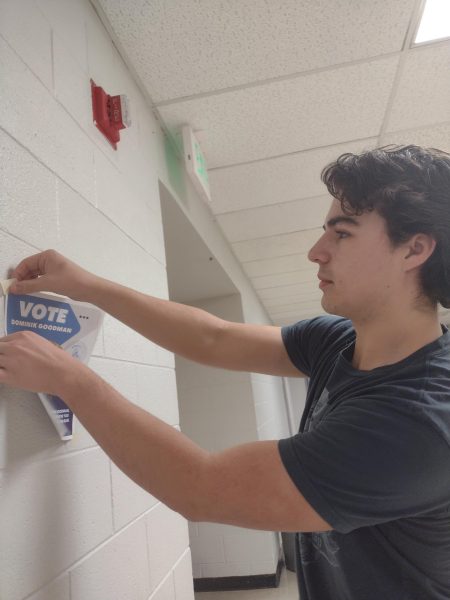$uper Bowl 50: A Commercial Event
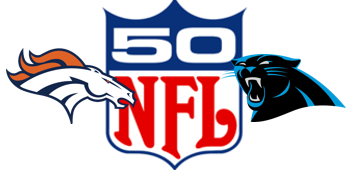
Super Bowl 50. Image from bing.com via the Creative Commons License
Sunday, February 7th, billions of televisions across America tuned in to see the Denver Broncos beat the Carolina Panthers in Super Bowl 50. A significant part of the entertainment of watching the Super Bowl comes from the commercials, and this half-century landmark game was no exception. At no other time do such an extreme quantity of viewers attentively watch commercials than at the Super Bowl, therefore, big name brands take full advantage of the spiked statistics to entertain viewers and grab their attention.
Super Bowl 50 was a big game for the NFL. The 50 year mark indicates half a century of American tradition, and they even ditched the traditional roman numeral to advertise for this year’s game (Super Bowl 50 also sounds much better than Super Bowl L). Additionally, because of the anticipated high revenue thanks to the significance of 50 years, numbers from ticket price to sponsorship funding have skyrocketed. Apple, known as the top dog in the world of sponsorship, was the first to step up to support Super Bowl 50. Additionally, the location of the Super Bowl in Silicon Valley is business fly paper. In an interview with Yahoo, Super Bowl Host Committee CEO Keith Bruce said, “The reason [Apple stepped up] is because they realized that it was important to Silicon Valley. It was during a bit of a transition time from Steve [Jobs] to Tim [Cook], and they told us, ‘This is the right thing to do. We’re building a mega campus that will be a stone’s throw from the stadium’” (Forbes.com).
More than that, the Super Bowl’s advertisement space has been revered as the most powerful source of consumer attention of any event in the world. The price tag for a 30 second advertisement this year shot up to $5,000,000. This is $500,000 more than last year, and $2,000,000 more than 2012, which reflects the turn out of this historical Super Bowl. If done right, even this outrageous sum of money can be worth the cost for companies focused on both the art of entertainment and sales. Even the football players benefit from this advertisement hype. Peyton Manning makes $12,000,000 per year in endorsements alone.
This year, Doritos, Honda, Marmot, Coca-Cola, Amazon, and dozens of other companies payed the price to fascinate the 111 million football viewer’s across America and the world. The reality of the sheer quantity of viewers is that even gaining the attention of 8.4% of the total viewers would be a successful pay off. Because no other “holiday” centers so heavily around the television set, Super Bowl Sunday demands attention from the companies that can afford the sum.
Studies show that 74% of Super Bowl watchers expect the commercials to be entertaining. To meet up with this expectation of a performance, advertisers like Bud Light and Doritos cannot disappoint on the novelty of their air time. Uniquely to the Super Bowl, viewers will be left talking about what they are shown and about whether it’s laughable, inspiring, or successful. With this make-or-break attitude in the minds of commercial professionals, months and sometimes years go into strategizing the entertainment aspect of Super Bowl commercials.
Moreover, veterans of the commercial world know that a funny commercial isn’t enough. The ad must also spark the viewer’s respect of the product and inspire them to buy. According to Marianne Bickle of Forbes, “If a commercial does not entice consumers to purchase the product, it is not successful. A funny and/or memorable Super Bowl commercial is a waste of time and money if it does not stimulate sales.”
Reflective of this idea, Super Bowl ads do not always pay off. The ads that take “sex sells” too far, the ads that make no sense, or the ads that misread the viewer’s demographics, generally miss the mark. If commercials lead the viewers with question marks or “why?” type reactions, they were unsuccessful. A comprehensive commercial makes sense in the viewers mind without being completely outright about wanting their money.
This year, there were extremely successful ads and some not so successful ones. A few favorites were Avocado from Mexico’s satirical space-themed commercial, Heinz Ketchup’s cutely dramatic commercial of weiner dogs running through a field, Honda Ridgeline’s singing sheep, and Bud Light’s play on political campaigns using the always hilarious Amy Schumer and Seth Rogan. On the other end of the spectrum, Mountain Dew’s Puppymonkeybaby commercial resulted in extreme reviews. Some people loved it, like Kayla Wiitala, who commented that, “Everyone else thought it was weird, but I loved it.” If a creepy Puppymonkeybaby dancing will make people talk about Mountain Dew, then it could be called effective, however most people’s reactions were of pure fear and confusion as to its connection with Mountain Dew.
This year, Doritos hosted their 10th annual Crash the Super Bowl competition for the chance to win $1,000,000 and have their commercial televised on the Super Bowl. When the three finalists were announced, Zach Snyder, the director of Batman v. Superman: Dawn of Justice, stated,“I was a commercial director for quite a long time, and if I landed a spot in the Super Bowl, it was kind of like the king daddy as far as spots.” Playing off of this idea of the Super Bowl being the popularity contest of advertisement, Doritos receives thousands of submissions a year for their Crash the Super Bowl contest. This year, the finalists were “Ultrasound” by Peter Carstairs of Australia, “Doritos Dogs” by Jacob Chase of LA, and “Swipe for Doritos” by David Rudy of New York. Ultimately, the winner of the competition was “Doritos Dogs”, a commercial which used rescue dogs as the actors and charmed audiences. According to an ABC New’s interview with Jacob Chase, it took a 12 hour shoot day and $1,000 to make the 30 second winning commercial, which clearly payed off for him.
Super Bowl commercials are simply a part of the national holiday that is the big final game. 111 million viewers this year expected the riveting game, the blingy half time show, and the above average commercials– and they were not disappointed. Talking in terms of revenue and production, the biggest names in the business world practically bleed for the business opportunity the Super Bowl provides. Super Bowl Sunday is a celebrated part of American culture, anticipated each year by many as a day to spend time with family and cheer on the best team. With Super Bowl Sunday come and gone, now you can go buy that Coca-Cola instead of that Pepsi and await the Bronco’s return next year (or whatever team you prefer). That is, unless you’re thinking of putting in a commercial at the next Super Bowl. If that’s the case, you better start saving money and/or selling your most valuable possessions now.
Sources:
Bickle, Marianne. “The Power of Super Bowl Advertisment.” Forbes. N.p., 2012. Web. http://www.forbes.com/sites/prospernow/2012/02/06/the-power-of-super-bowl-advertising/#4b34631432fc
“Doritos Commercial 2016 | Super Bowl Commercials 2016.” Super Bowl Commercials 2016. N.p., n.d. Web. 02 Feb. 2016. http://www.superbowlcommercials2016.org/doritos/
“Peyton Manning.” Forbes. Forbes Magazine, n.d. Web. 02 Feb. 2016. http://www.forbes.com/profile/peyton-manning/
“Super Bowl Commmercials.” Super Bowl Commmercials. N.p., n.d. Web. 02 Feb. 2016. http://www.superbowlcommercials2016.org/doritos/

Hi friends. I am a senior at Air Academy and I will be the Junior Marketing Editor for the Jetstream Journal this year. If you brought me coffee today,...



